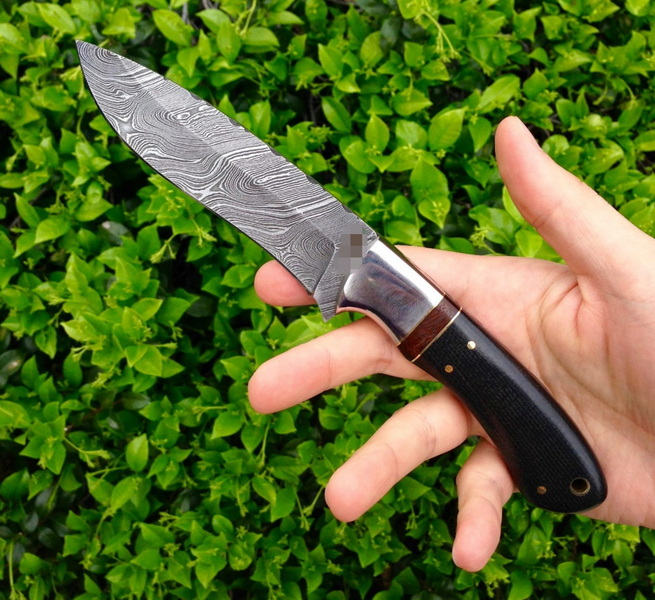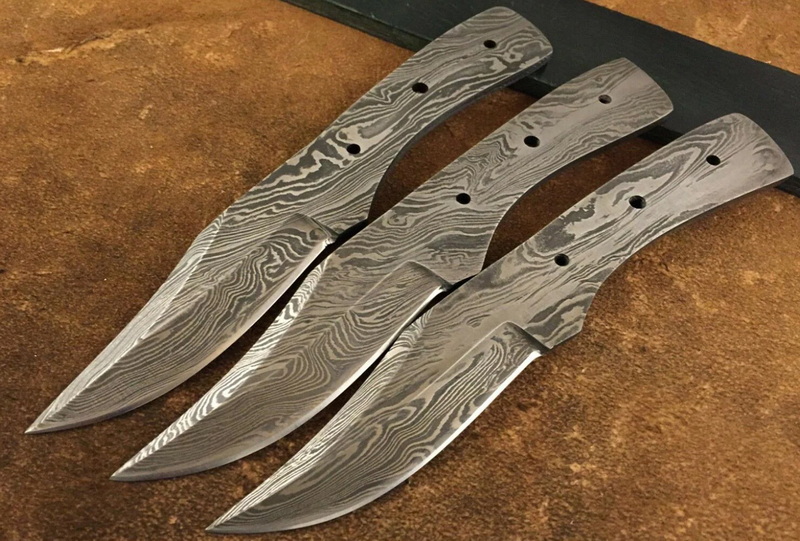- All
- Product Name
- Product Keyword
- Product Model
- Product Summary
- Product Description
- Multi Field Search
Views: 222 Author: Ann Publish Time: 2025-10-15 Origin: Site











Content Menu
● Introduction to Damascus Knives
● The Rich History Behind Damascus Steel
● Modern Damascus Steel: Craftsmanship and Materials
● Performance Advantages of Damascus Blades
● Versatility and Uses in the Kitchen
● Caring for Your Damascus Knife
● The Rising Popularity of Damascus Knives
>> 1. What makes Damascus steel different from regular steel?
>> 2. How can I tell if a Damascus knife is real?
>> 3. Are Damascus knives better for kitchen use?
>> 4. How do I maintain a Damascus knife?
>> 5. Why are Damascus knives more expensive?
Damascus knives hold a special place in the world of cutlery, revered not only for their striking visual appeal but also for their superior craftsmanship and exceptional performance. With a rich history and a unique forging technique that combines aesthetics and function, Damascus knives stand apart from other blades in several significant ways. This article delves deeply into the elements that make Damascus knives unique—from their intriguing history to the intricate manufacturing process, distinctive patterns, performance advantages, maintenance tips, and their versatile use in both professional and home kitchens.

At first glance, a Damascus knife captivates with its mesmerizing patterns—swirling waves, ripples, and organic textures that resemble flowing water or wood grain. These characteristic patterns are not mere surface decorations but an intrinsic part of the blade created through a layered forging technique. A Damascus knife is constructed by folding and welding multiple layers of steel alloys together, resulting in a blade that combines strength, sharpness, and flexibility in a way few other blades can match.
The story of Damascus steel dates back over two thousand years, deeply rooted in the ancient craftsmanship of the Middle East and South Asia. Originally, the term “Damascus steel” referred to blades made from wootz steel—an ultra-high carbon crucible steel developed in India. These blades were highly prized for their ability to hold a razor-sharp edge, resist shattering, and exhibit beautiful watery patterns on the surface.
The name “Damascus” comes from the Syrian city of Damascus, which became famous during medieval times for producing swords from wootz steel through trading and forging techniques. The mysterious qualities of the ancient Damascus steel—sharpness, flexibility, and the striking surface pattern—led to its legend. Although the exact methods used in ancient times were lost, modern blacksmiths and metallurgists have recreated the spirit of Damascus steel through modern pattern welding, producing what we know today as Damascus knives.
Today's Damascus knives are crafted usually by pattern welding, which involves layering different types of steel—often a high-carbon steel for hardness and a softer, more corrosion-resistant steel. These layers are stacked, heated, and hammered together repeatedly, then folded onto themselves multiple times to increase the layer count. This process results in hundreds or thousands of thin layers bonded into a single blade.
This layered construction is the essence of Damascus steel's uniqueness. Unlike a typical single-steel blade, Damascus knives blend the properties of multiple steels, creating a blade with exceptional edge retention, toughness, and flexibility. True Damascus knives display these layered patterns consistently throughout the metal, including on the blade's face, spine, tang, and sometimes even the bolster.
In contrast, fake Damascus knives often rely on acid-etching or laser engraving on plain steel to mimic the Damascus look without the structural benefits. Knowing the difference is crucial for buyers who want the genuine layered-steel performance and beauty.
Beyond their artistic allure, Damascus knives are highly regarded for their performance in the kitchen. Key attributes include:
- Superior Sharpness: Thanks to the high-carbon steel layers, Damascus knives can achieve exceptionally fine, sharp edges and retain their sharpness longer than many standard blades.
- Durability and Toughness: The multi-layered construction allows the blade to absorb shocks and resist cracking or chipping during demanding kitchen tasks.
- Flexibility: Damascus blades strike a perfect balance between hardness and flexibility, reducing brittleness while allowing precise cutting control.
- Corrosion Resistance: The combination of steel types often enhances resistance to rust and corrosion compared to pure high-carbon blades.
These characteristics make Damascus knives ideal for precision slicing, dicing, chopping, and delicate culinary tasks. They are favored by professional chefs and serious home cooks who demand high performance and dependability from their tools.

Damascus knives are as versatile as they are beautiful. They come in various styles—chef's knives, utility knives, paring knives, cleavers, and more—each optimized for different kitchen tasks but unified by the Damascus steel blade.
For professional kitchens, Damascus knives offer precision and durability for continuous, heavy-duty use. In home kitchens, they are prized as heirloom-quality tools that blend utility with aesthetic pleasure. Collectors also seek Damascus knives for their artistic value, often displaying them as works of craftsmanship and tradition.
Maintaining a Damascus knife correctly is essential to keeping its beauty and performance intact for years.
- Always hand-wash the blade promptly after use and dry it thoroughly to avoid rust spots.
- Avoid soaking in water or using dishwashers, which can damage the layered steel.
- Store in a dry, safe place, preferably in a knife block or sheath to protect the edge.
- Apply a light coating of mineral oil occasionally, especially for high-carbon Damascus steels, to prevent oxidation.
- Regular honing and occasional professional sharpening can maintain the fine edge.
With careful maintenance, a Damascus knife can last a lifetime, even improving with age as the patina develops on the blade.
Due to the blend of craftsmanship, durability, and aesthetics, Damascus knives have gained immense popularity worldwide. As consumers and chefs increasingly appreciate traditional skills combined with high-performance materials, demand for authentic Damascus knives has surged.
Manufacturers in regions like China have perfected contemporary forging techniques to produce high-quality Damascus knives that meet international quality standards while maintaining competitive pricing. This trend not only promotes traditional artistry but also opens new opportunities for OEM collaborations that cater to discerning global markets.
What makes a Damascus knife unique is the seamless fusion of ancient forging traditions with modern metallurgical expertise to produce blades that are both highly functional and visually stunning. The layered steel composition delivers edge retention, flexibility, and durability unmatched by many other types of blades, while the natural, intricate patterns ensure every knife is a work of art. For chefs, collectors, and kitchen enthusiasts, owning a Damascus knife is about having a tool that represents heritage, performance, and timeless beauty.

Damascus steel combines multiple layers of steel alloys through forging, creating a pattern-welded blade that offers superior strength, sharpness, and flexibility compared to single-steel blades.
Real Damascus knives display intricate, layered steel patterns consistent throughout the blade, including the spine and tang, as opposed to fake versions with only surface etching.
Yes, their exceptional edge retention, toughness, and flexibility make them highly suitable for various kitchen tasks, from slicing vegetables to carving meats.
Proper care involves hand-washing, thorough drying, occasional oiling, and safe storage to prevent rust and maintain sharpness.
The labor-intensive forging process, skilled craftsmanship, and unique blade aesthetics contribute to their higher price compared to standard knives.
The Ultimate Professional Knives for Halal Butchery in Middle Eastern Kitchens
Chef Knife Size Guide: Choosing Between 6″, 8″, 10″, And 12″
Custom Knife Handles: How To Design A Chef Knife That Fits Your Hand Perfectly
Chef Knife Surface Treatments Guide: From Polished Migaki To Damascus Patterns
Inside Our Professional Knife Sample Room: Quality You Can See
Universal Knife Block Buying Guide: Modern Acrylic & ABS Knife Holders for Professional Kitchens
Universal Knife Block: The Complete Guide To Modern, Hygienic Knife Storage
The Complete Guide To Red Handle Knife Sets: Style Meets Functionality in The Kitchen
Professional Knives for Halal Butchery And Middle Eastern Cuisine